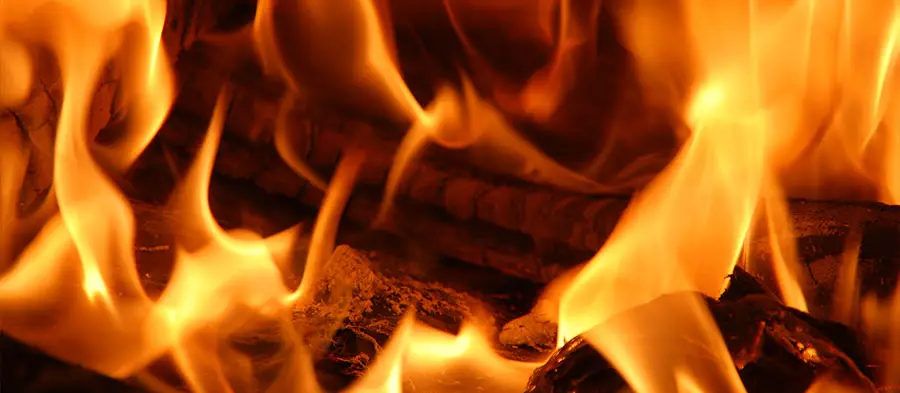
Hammock camping with a fire under your tarp? Is it safe? I must admit that it has never occurred to me to put a fire under my tarp while I sleep in my hammock. Why? Maybe I’m just Mr. Safety, and it just hasn’t ever seemed like a good idea, but people are asking about it – a lot. So I thought this topic deserved a good bit of research and a well-thought-out answer.
Is it safe to have a fire under your tarp hammock camping?
No, it is not wise or safe to set a fire under your tarp while hammock camping. Please don’t do it. The nylon or sil-nylon material that both your tarp and hammock are made of are plastic-based fabrics that are not resistant to fire. In fact, just one tiny ember can melt through your tarp or hammock and completely ruin it. Besides, you are sleeping enclosed in this material. Common sense says it’s a no-go.
Safely setting up your hammock around a campfire
Almost all lightweight camping hammocks are made of nylon. Nylon is a polymer which means it’s actually made of plastic. Plastic melts. Don’t put your hammock near your campfire. All backpacking and camping hammocks will burn and melt. Embers from the fire tend to fly into the air and land on your hammock before it has cooled into ash. Too many of these embers making contact with your hammock or tarp will leave them looking like Swiss cheese. Ensure a clear distance from your hammock set-up to the fire. The general rule for keeping your tent or hammock safe while near a campfire is to make sure everything is at least 9ft (3m) away from the fire. I know personally, this is where I keep it because I want to get as close as I can for heat on cold nights, but I also don’t want to get an ember flying over onto my hammock while I’m sleeping. I don’t have a fear of an ember jumping over to my hammock and catching me on fire at night when I’m this far away. And to be honest, when I am this far away, I can still feel the heat just fine.
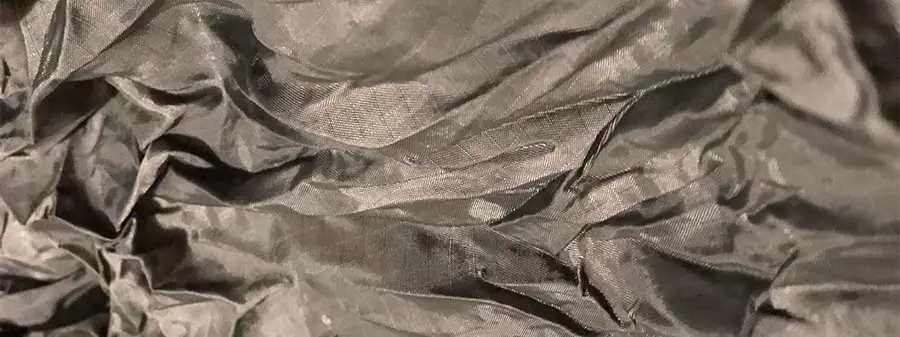
Risk of damage to your tarp
Most tarps are made of nylon as well. Now, there are other fabric options when it comes to tarps, but typically all tarps are designed to be very lightweight and to protect you from wind, rain, and snow – not fire.
Tarps can be rather expensive. Sil-nylon tarps are made of nylon, but they also have a thin layer of silicone between the nylon to make them ultra waterproof. For those of you who’ve been stuck in the rain for several days while hammocking with a plain nylon tarp are aware of this, but eventually, the water will soak through your tarp. This is especially true if it’s been used for long durations and/or it’s a little worn.
Even the smallest embers will damage your tarp and it will no longer be waterproof and will not be able to protect you from the elements as well. You are probably well aware by now, but hammock camping gear and set-ups aren’t cheap. We all invest a good chunk of money into it. Protect your investment and keep it safe from the damage that a fire could potentially cause. If you are worried about staying warm, make sure you have the proper insulation system in place, and you will be plenty warm enough.
I know some people use their hammocks as a chair to sit and hang out in and they also want to be close to the fire. I totally get that. I love sitting down by a fire after a long day’s hike, or honestly after any day really, but I don’t want to destroy my hammock in the process. To get around this problem, I use an ultra-lightweight backpacking chair instead. Besides being amazing to sit around the fire in, a chair is also incredibly handy to have on your hike. This way I am able to sit around the fire until I’m ready to go to bed and I know my hammock set-up is safe from the fire. Before I turn in for the night, I move everything away from the campfire and the embers are left to die down.
Capturing heat with your tarp
Even though you’re setting up your hammock 9 feet away from the campfire, you can still set up your tarp in a particular configuration that will help you capture some of the fire’s radiating heat. The set-up I prefer when I’m out hiking with a friend is to space the hammocks about 18 feet apart and set the fire right in the middle of our hammock set-ups. Then we set up our tarps in “porch mode.” I’ll explain more about this tarp configuration for those of you who may not be familiar with it.
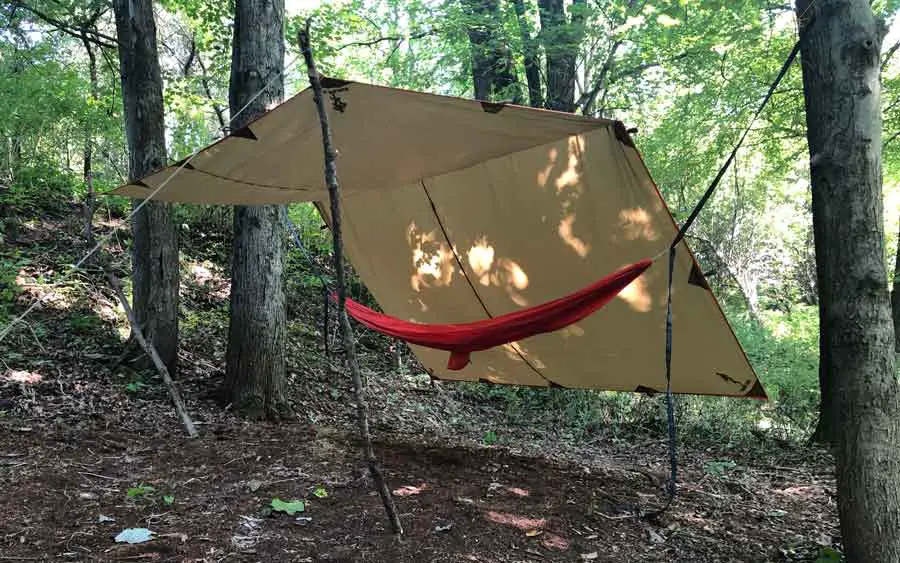
“Porch mode” is a tarp configuration where one side of your hammock tarp is angled downward just like you would typically pitch it. The other side of the tarp is angled upward and you can angle each corner up with your trek poles or any good, sturdy sticks. This tarp configuration looks like a porch, hence the name. Setting your tarp up this way will allow the heat to find its way under your tarp and get trapped there. Granted, the captured heat will not stay there all night because your fire is slowly dying down, but you can feel a difference when going to bed. It gives you time to warm up when you first get into your hammock for the night. As mentioned before, your insulation system should keep you warm from then on out as the fire dies down.
I talk more about insulation systems: Is an Underquilt Necessary?
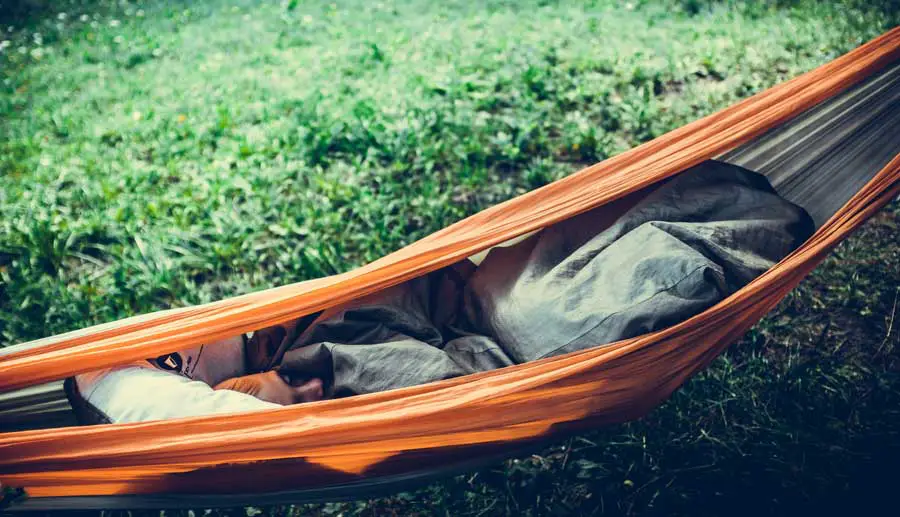
When hammock camping, you should always be aware of fire safety and keep it in the forefront of your mind at all times. Next, I’m going to talk about fire safety and the importance no matter if you are hammock camping, tent camping, or just taking a day hike.
Fire safety while hammock camping
So here are just a few reminders and tips to help you be safe around your campfire. I realize many of you will know everything I’m about to talk about when it comes to fire safety, but there is nothing wrong with a little safety refresher.
Choose the right campsite
When considering the idea of having a fire under your tarp, choosing the right place and trees to set up is essential. Be sure to find a clearing that will allow at least a 5-foot circle around the fire that is free from leaves and other dry debris. You will also need to make sure that you are choosing a spot that the branches of the trees is at least 12 feet above you.
The wood
When you are collecting your firewood, be sure you store it in a pile upwind of the fire. The last thing you want is for an ember to blow over onto your dried out woodpile and start a large fire. If you have the fire going all night, you want it to burn down and not have a huge bed of coals to deal with the next morning. If you do end up with a larger than intended bed of coals by morning, you will have to waste some of your water to extinguish them before you leave the site. Trust me, you don’t want to be in that position. Don’t burn anything larger than your wrist. If you find a huge log it may take forever to burn down. It will likely catch really well, but that would bring us back to the last issue with having lots of coals in the morning. You want to find the right balance to where you only have a tiny smolder to tend to when you wake up in the morning.
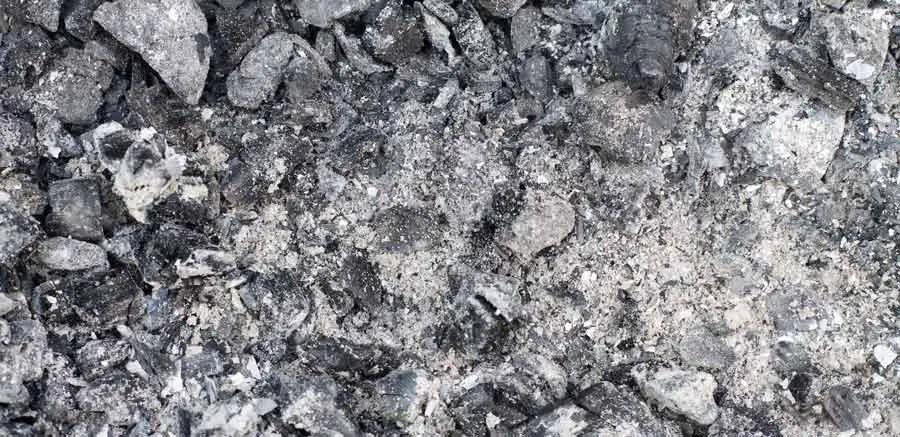
Putting the Fire Out
I briefly mentioned this in the last paragraph, but this is so important and I have to drive it home. I understand having a fire, and I support having small ones when you are camping. If you are at a campsite with fire rings, this point doesn’t really apply to you, but it’s still good information to know.
When you are out in the woods, the main goal is to keep nature the way you found it. Fire is a natural way to revitalize nature, but you have to be responsible and make sure your fire is 100% extinguished before you leave your campsite. It is for this reason that it’s a good idea to just let your fire die down naturally over the course of the night while you sleep. Unless you are cooking in the morning and have enough water to fully extinguish your cooking fire before you leave, letting the fire die down naturally is the way to go. When you have a small smoldering fire, or should I say smoldering coals, in the morning it should not take much water to fully extinguish it. As an extra precautionary step, find a stick and stir the coals around with the water to make sure the ashes all get soaked as well. This way you leave your campsite without worry and you are confident that you left nature just as you found it.
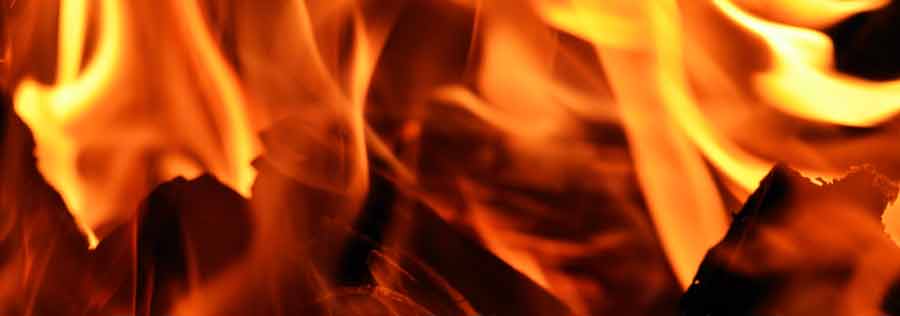
What Have We Learned?
I know I sound like Smokey the Bear when I talk about fire safety, but it really is that important. I would strongly advise against putting a fire under your tarp while hammock camping. Keep yourself and your gear safe and don’t take the risk where your stuff could potentially be destroyed. Personally, I wouldn’t risk it. I’m sure you could find other opinions that differ out there on the interwebs, but this is just my take on the topic.
If you’re worried about staying warm, I would advise you to research and test out different insulation systems and be more prepared with the proper equipment like an underquilt and a good sleeping bag. The bottom line here is to stay safe and, in my humble opinion, hammocking with a fire under your tarp will never be a good idea.
So please stay safe the next time you plan to have a nice warm fire. As always, enjoy The Wanderful Wild.
